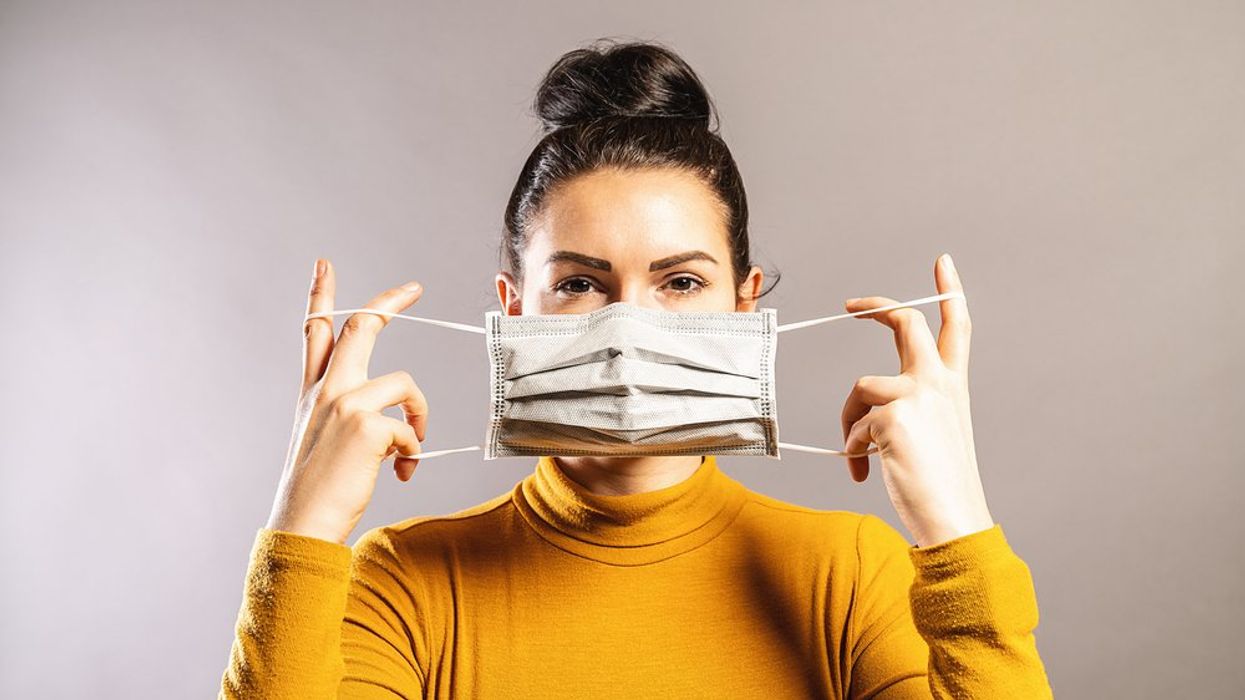
Video Source: Advocate Channel
(CNN) — If you’re at high risk of serious illness or death from Covid-19, it’s time to dust off those N95 masks and place them snugly over your nose and mouth to protect yourself from a recent uptick of the virus, according to a growing number of experts.
That advice should go all the way up to 80-year-old President Joe Biden, said Dr. Jonathan Reiner, a cardiologist.
“Octogenarians comprise the highest-risk group for complications following Covid infection,” Reiner said.
“At least until the numbers start to drop again, it would be appropriate for President Biden to take some precautions and wear a mask in crowds.”
Other high-risk groups include people with diabetes, cancer, chronic liver, kidney or lung disease, organ or stem cell transplants, HIV or other immunocompromising conditions, a history of heart disease or stroke, dementia or mental health issues.
“If you’re a caregiver for somebody who is at increased risk of complication following infection, then I think you should also consider putting a mask on in public places,” said Reiner, a professor at the George Washington University School of Medicine & Health Sciences.
“And since the masks that are most effective are N95 that are now readily available, that’s the kind of mask you should wear,” he added.
The US Centers for Disease Control and Prevention urges people to “wear a mask with the best fit, protection, and comfort for you,” and it notes that some people are at higher risk for severe illness from Covid-19. But the agency doesn’t make a broad recommendation for everyone to adopt masks. That could change if hospitalizations reach critical levels. The CDC recommends universal masking in jurisdictions that have 20 or more people with Covid per 100,000 in local hospitals and masking for high-risk individuals when 10 to 19.9 people per 100,000 are hospitalized from the virus.
Overall, there were about four new hospital admissions for every 100,000 people nationwide in the week ending August 12, which is considered low, according to CDC thresholds. No counties had high levels of Covid-19 hospitalizations. But 85 counties — about 3% of the country — were in the medium threshold. About a quarter of those counties were in Florida.
“Indoors when there’s a lot of people and it’s crowded, poor ventilation, I’m still leery at this point, especially with the uptick we’re starting to see now, which I don’t know when it will plateau,” said Dr. Eric Topol, a cardiologist at the Scripps Translational Research Institute.
A new variant, BA.2.86, has captured scientists’ attention because it’s highly mutated, but so far it’s only been detected in a small number of people globally. Nonetheless, “it doesn’t look good … in terms of the virus’ nonstop evolution,” Topol said. The virus “keeps finding new ways to challenge humans, to find new hosts and repeat hosts, and it’s relentless.”
What’s going on with Covid-19?
The CDC stopped reporting aggregate Covid-19 case counts this year, but a growing number of hospitalizations has triggered concern among those who track the disease.
Levels of the virus in wastewater from toilets — which can be an early indication of a Covid spike in a community — have doubled, said Dr. Robert Wachter, professor and chair of the Department of Medicine at the University of California San Francisco.
“Hospitalizations have not yet doubled, but I think they probably will, as the numbers lag a couple of weeks behind,” Wachter said. “It’s riskier that you will get infected now than it was a month or two ago, without question, probably twice as risky. If you’re trying to be careful, it’s time to whip out the mask again.”
Although new coronavirus variants, like the dominant variant, EG.5, might not have driven the recent acceleration by themselves, they might be somewhat resistant to immunity provided by current vaccines and boosters.
“In addition, most people haven’t gotten a booster for a while, so the collective immunity is lower than it was six months ago,” Wachter said. “The virus sees that and sees most faces and noses and mouths are uncovered and unprotected, so it takes advantage of that opportunity.”
A new booster designed to better protect against many of the commonly circulating strains of Covid will be out in a month or so, and most people can wait for that new shot to jumpstart their immunity, said Dr. Peter Chin-Hong, professor of medicine and an infectious disease specialist at the University of California, San Francisco.
But if you’re over 65, are immunocompromised or haven’t had Covid recently, and you haven’t had another dose of the bivalent booster, you should get it now to protect yourself, he added.
The new booster coming this fall will target a family of Omicron subvariants called XBB and is expected to provide good protection against even newer versions, Topol said, but scientists are not sure how significant BA.2.86 will be.
Springing into action
Some institutions are already reacting to the rise in Covid. Morris Brown College in Atlanta announced a return to mandated physical distancing and masks just one week after classes started in August.
And pediatricians are poised for the typical return-to-school surge in all kinds of respiratory illness, whether colds, flu or Covid.
“We are seeing an increase in Covid cases, and in general the overall percentage of testing at home is low, so there may be even more Covid cases than we know about, especially since the vast majority of kids have no or mild symptoms,” said pediatrician Dr. Sara Bode, medical director of school-based health and mobile clinics at Nationwide Children’s Hospital in Columbus, Ohio.
Still, the majority of students do not need to wear masks and should instead use traditional prevention such as handwashing, coughing into their elbow and staying home when sick, said Bode, who chairs the American Academy of Pediatrics’ Council on School Health.
However, if a child has a significant health condition that affects their immune system and their ability to fight off infections, “that is when I would recommend talking with your doctor about the need to add a mask to you individually to help prevent exposure,” she said.
If necessary in an outbreak, there could be a return to universal masking at school, Bode said, “but I would definitely highlight and encourage people to make that their change and not to go back to virtual learning.”
“We learned from the pandemic that kids need to be in school. It’s really important for their social and emotional health,” she said.
Although some medical offices and hospitals have gradually dropped masking requirements, a group of doctors in Washington state wrote in an editorial published Tuesday that health care settings should maintain masking — even if the broader population doesn’t.
“Masking also remains an important mitigation measure to protect the health of our health care workforce, including those who are at high risk for severe disease,” the doctors wrote in in the Annals of Internal Medicine.
Are Americans in the mood for masks?
Despite the concern among experts and some institutions, Americans don’t appear to be worried enough about the recent rise in cases to change their behavior. Covid-19 was at the bottom of their list of key public health threats, according to the latest Axios/Ipsos American Health Index poll.
The number of adults who say they wear a mask in public sometimes or at all times continues to decline, the poll found, while 82% haven’t taken a home Covid-19 test in the past week.
When it comes to protecting themselves, “everybody’s choosing their own adventure now,” Wachter said. “I don’t particularly blame young, healthy vaccinated people for saying ‘I’m over this. I don’t want to deal with this anymore,’ as long as they have their eyes open and understand the risks they’re taking.”
“Covid isn’t just only about the effects of the infection,” Chin-Hong said, adding that the infection can raise the risk of diabetes, heart disease or Alzheimer’s that’s independent of long Covid. “You don’t want to be afraid of it or … go around like a boy in a bubble,” he said. “But if you cannot get it, that’s a good thing at any age.”
Regardless of how you may feel about wearing a mask, the reality is that Covid-19 is here to stay, experts said, and we will need to continue to adapt.
“The virus is always lurking, waiting for openings, so I think Covid is just going to be a bit of a roller coaster, probably forever,” Wachter said. “I liken it to the Golden Gate Bridge: You’ve finished painting it, and the minute you’re done, you’ve got to start all over again.”
CNN’s Amanda Musa, Brenda Goodman, Deidre McPhillips and Meg Tirrell contributed to this report.
The-CNN-Wire
™ & © 2023 Cable News Network, Inc., a Warner Bros. Discovery Company. All rights reserved.

















































